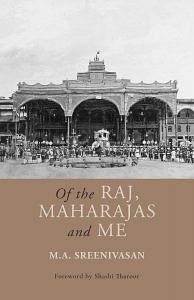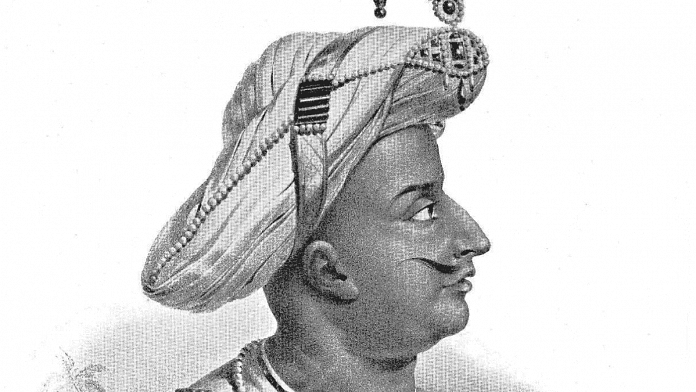The seventeenth century saw the Ananthampillais become Pradhans (ministers) of the Mysore rajas. The history of Mysore records their brave, loyal and devoted service to the royal family and the state, their successes and disappointments, their fortunes and misfortunes in the centuries that followed. In 1608, when Raja Wodeyar of Mysore occupied the fort of Srirangapatna, he needed the authorisation of the Emperor of Vijayanagar to hold it. At the Raja’s request, Tirumalayyangar, a descendant of Govindaraja, went to Vijayanagar to obtain it for him, and became his Pradhan. His descendants continued to be advisors and Pradhans of the Maharajas who succeeded to the throne.
Tragedy struck the Wodeyars in 1762 when Hyder Ali, a troop commander employed by the Maharaja, usurped the throne. He imprisoned the Maharaja, who languished and died in confinement. He plundered the Pradhan’s belongings and had him strangled to death in 1765. Hyder Ali was succeeded by his son Tipu Sultan. The years that followed were to witness the lovely island capital of a peaceful kingdom, ‘an ornament to the lady earth, filled with peace, poets, wise men and ministers’ (as described in an inscription in 1685), transformed into a gory battlefield with prisoners tortured and chained in dungeons near the beautiful temple of Ranganatha. Loyal, devoted subjects, high and low, lived in terror or fled the kingdom; thousands were forcibly converted to Islam; hundreds massacred, dragged through the streets, chained to the legs of elephants, or had their heads crushed by elephants. By way of variety, some were pushed to death down the steep precipice known as ‘Tipu’s drop’ on top of Nandi Hill near Bangalore.
It would be wrong to think that such inhuman, cruel treatment of enemies and prisoners was unusual or exceptional. The Sultan’s conduct was no exception to the practices prevalent at the time or even to those which continued in later years, when less crude and more sophisticated methods were used.
Lakshmammanni, the bereaved Maharani, a woman of remarkable courage and ability, was determined to end the usurpation and regain the kingdom. She appointed Tirumal Row and Narayan Row, the sons of Pradhan Govindaraja, as Pradhans to help her achieve her object. The saga of the heroic and untiring efforts of the Maharani and the Pradhans are recorded by Dr Lewis Rice in the Mysore Gazetteer, and in The Mysore Pradhans, a work by Dr K.N.V. Sastry, a former professor of history in the University of Mysore.
Here are a few events concerning the Pradhans that have been chronicled in these works.
Triumal Row and Narayan Row were sent by the Maharani on a secret mission to meet the British Governor at Madras, and the British Resident at the Court at Tanjore. A treaty was entered into in 1782 between the Resident and the Pradhans and a letter was written by the Governor to the Maharani assuring her of help ‘in recovering possession of the country usurped by Hyder Ali, a servant of the Raja’.
The year 1783 saw the Pradhans playing a new role as army commanders. They mobilised three hundred horses and guided Colonel Lang over the Ghats in the march towards Srirangapatna. On the failure of an attempt to overthrow his government, Tipu, who was in Mangalore, ordered the arrest of all the relatives of Tirumal Row and many others, about seven hundred in all, and had them chained and imprisoned in dungeons in Srirangapatna. On his return to the capital he had all the seven hundred families massacred. The properties of the Pradhans and their relatives were confiscated. Narayana Row was captured and imprisoned, but managed to escape.
After the British made peace with Tipu in 1784 and signed the Treaty of Mangalore, the Pradhans bided their time in Tanjore. In 1796, the Maharani wrote to Tirumal Row saying: ‘It is twenty-two years since you left this kingdom. We are daily being persecuted by Tipu. We cannot say at what moment he may have us murdered. And for the restoration of our kingdom, you have been doing your best. All this at what sacrifice and suffering for our sake! Seven hundred families of your kith and kin have been ruthlessly murdered, all your wealth has been spent, and you are a ruined person. All along it has also been our greatest anxiety to see our kingdom justly administered with you as our right-hand in Srirangapatna. We learn that the French vakeel (agent or representative) at the Court of Tipu has strongly advised him to put us all to death as we may one day be the cause of his ruin.’ With the letter, she sent a copy of the Treaty that Tipu had made with the French.
 Extracted from Of the Raj, Maharajas and Me by M.A. Sreenivasan. Published by Speaking Tiger Books, 2022.
Extracted from Of the Raj, Maharajas and Me by M.A. Sreenivasan. Published by Speaking Tiger Books, 2022.




